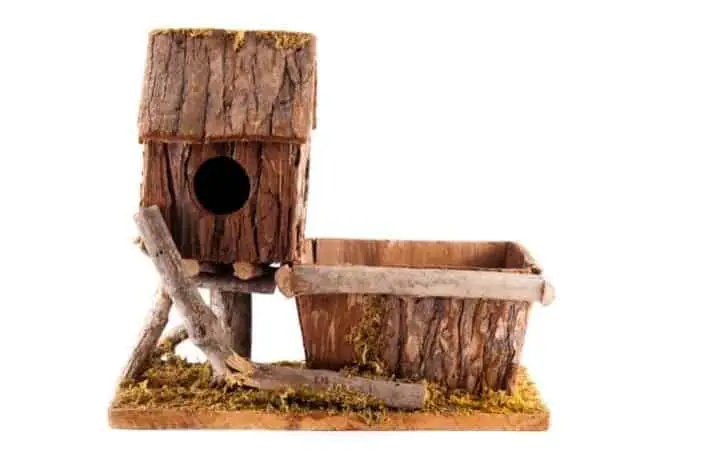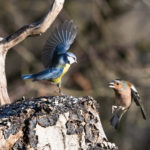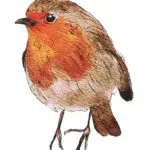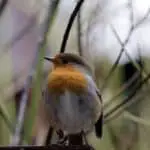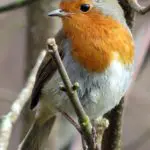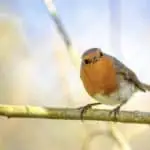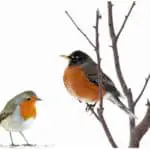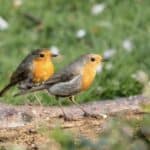During winter, when food is scarce, birds will often find a sheltered roosting spot to help them save energy. Sometimes this is a hollow tree, lush foliage, or even an abandoned building. A bird’s roosting spot needs to provide shelter from elements, be near a food source, and be safe from predators.
Many people want to provide a hospitable environment for birds and put up nest boxes. Nest boxes provide a potential roosting spot for birds, but do they actually use them? This article will look at whether birds roost in nest boxes and how you can encourage them to do so.
A nest box is a man-made structure that provides birds with a sheltered place to roost or nest. Nest boxes come in various shapes and sizes, but they typically have an entrance hole on one end and are open on the other. They can also be used to attract birds that generally don’t build their nests, such as bluebirds and swallows.
Many birds will roost in nest boxes during the winter months. This is because the boxes provide warmth and shelter from the elements. In some cases, birds will even share roosting space with other species of birds. In fact, most common UK birds display curiosity on nest boxes. Male tits are frequently observed pounding on the nest box entrance hole. This is probably a way to show off to potential mates rather than trying to enter the hole. The female will also peck at the wood vigorously so much so that she may even chip away the surrounding bark. This is to see if the nest box is safe for her and her brood from predators.
Great tits and blue tits also display the exact behaviour of hammering inside the nest hole, but this is just a display of aggression to other birds and not a way to show off their strength or fitness.
Also, pied flycatchers take over the nest box that other birds already occupy. They tend to build their own nests on top of the existing ones. They even lay eggs on top of the other bird’s eggs.
Wrens are also known to roost in nest boxes, usually in large groups. They will even share roosting space with other birds to share body heat. This is beneficial to them, especially during the cold winter months.
When the climate turns cold and the days grow shorter, many birds abandon their usual roosting spots in trees and shrubs for the relative warmth and protection of nest boxes. Roosting spots are where birds rest and sleep at night. Offering a nest box to your backyard birds is a great way to provide them with a comfortable place to roost to escape the cold weather. Here are a few tips to encourage birds to roost in your nest box:
- Place the nest box in a sheltered location. A nest box placed on the side of a building or tree protected from wind and weather will be more appealing to birds than one exposed.
- Keep the nest box clean. A dirty nest box is not only unappealing to birds, but it can also be health hazard for them. Be sure to clean out your nest box regularly to prevent the build-up of parasites and other pests.
- Mount the nest box at the correct height. A good height for a nest box is about ten feet off the ground. This will make it accessible to the birds while still providing them with a sense of security.
- Protect the nest box from predators. Ensure your nest box is properly protected from predators like cats and raccoons. One way to do this is to mount the box in a metal pole so predators can’t climb up to it.
- Offer food and water nearby. Place a feeder near the nest box to provide the birds with a source of food and water. This will make the nest box even more appealing to them.
It is important to note that there is a difference between a nest box and a roost box. Birds sometimes use nest boxes for roosting at night, although this is not their primary purpose for using the boxes. While some bird species will roost in nest boxes regularly, others only use them occasionally or not at all. Nest boxes, on the other hand, can be too small for some birds, and the entrance hole may be in the wrong place for others. Also, nest boxes cannot provide that much-needed insulation when it is cold outside.
There are a few important differences between roosting boxes and nest boxes. A practical roost box is designed to preserve heat, whereas a nest box only has a few holes for ventilation. The entrance to a roosting box is typically located near the bottom, so that heat can rise and accumulate inside the box. In contrast, the access to a nest box is usually located near the top or side to prevent predators from reaching the eggs or young birds inside.
If you have a nest box that is currently unused, you can convert it into a roost box for the winter. Simply turn the front panel of the nest box around so that the opening is at the bottom. This way, the heat from the birds will be trapped inside and will help to keep them warm. You can also add a perch to the inside of the roost box for the birds to use. If you have a piece of wood or a branch that you can use, that will work great. Twigs or small branches can also be used, but make sure that they are not too thin. Lastly, drill ventilation holes to the roost box so that the birds have enough air to breathe.
Many different species of birds will take advantage of these cosy little homes during the colder months. Nest boxes not only provide birds with a place to roost, but they can also offer protection from predators and bad weather. If you’re looking for a way to attract more feathered friends to your backyard, consider installing a few nest boxes this winter!
